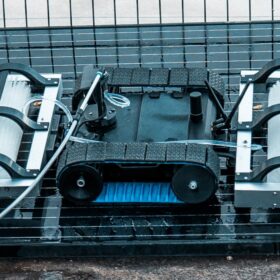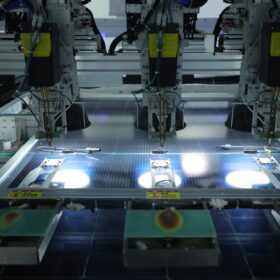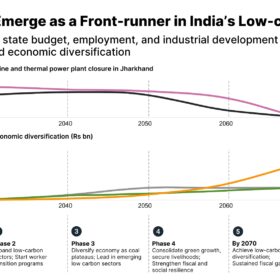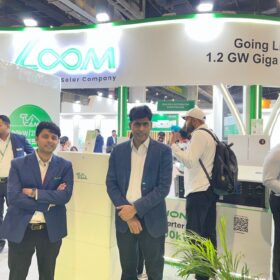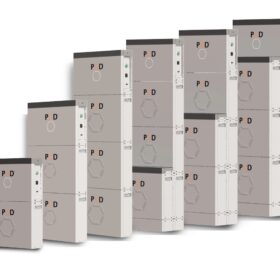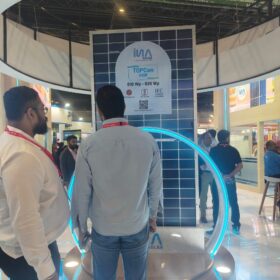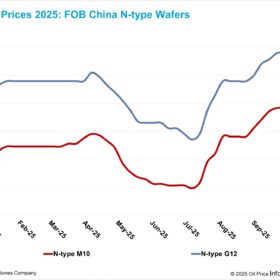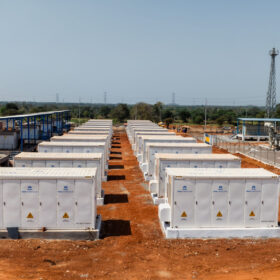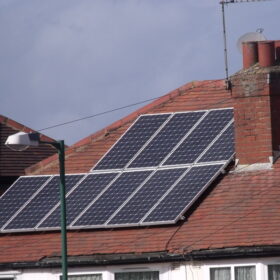French startup launches cleaning robots for solar PV shade structures
Solar panel cleaning equipment company Objectif Drone has launched a new 7 kg dual-brush cleaning robot with a speed of 5 km/h made for small and medium-sized PV installations.
India’s solar module production capacity to reach 215–220 GWp by FY28: CareEdge Ratings
India’s solar module manufacturing capacity is expected to reach 215–220 GWp by FY28, driven by strong policy support, growing domestic demand, and export opportunities, according to a new report by CareEdge Ratings. The country’s solar cell manufacturing capacity is also projected to rise sharply to around 100 GWp by FY28.
Jharkhand can emerge as a front-runner in India’s low-carbon transition
Jharkhand’s vast renewable energy potential, combined with its industrial base and critical mineral reserves, positions the state to emerge as a hub for low-carbon manufacturing, ranging from EVs, solar panels and battery energy storage systems (BESS) to green hydrogen production.
Pipelines for the future: Engineering challenges in hydrogen transport
As nations move towards low-carbon economies, hydrogen pipelines could become the backbone of industrial decarbonisation, linking production hubs to demand centres with efficiency, safety, and reliability. Building this backbone is not just an engineering task; it is a strategic investment in a cleaner energy future.
“Next year, the solar tracker market will be much larger”: GameChange Solar CEO
Vikas Bansal, President and CEO – International, GameChange Solar, expects that 55–60% of India’s new utility-scale solar capacity additions in FY 2027 will use trackers — a significant jump from the current 30–35% adoption rate.
Loom Solar showcases 730 Wp modules at REI 2025, announces 1.2 GW module factory in Uttar Pradesh
Loom Solar showcased its TOPCon and HJT PV modules up to 730 Wp, battery energy storage systems ranging from 1 kWh to 5 MWh, and made-in-India PV inverters from 3 kW to 50 kW. The company also announced plans to set up a 1.2 GW module factory in Uttar Pradesh.
Australia’s PowerCap enters U.S. with sodium-ion batteries
Australia’s PowerCap has entered the US market with its sodium-ion stationary storage systems and plans to build a manufacturing facility to serve customers across the Americas.
The impact of dust on PV systems in arid coastal environments
A Saudi–Egyptian research team investigated the effects of four types of dust on photovoltaic panels in arid coastal environments, finding that power losses can reach up to 48%.
INA Solar to begin G12R TOPCon cell production by September next year
Deepak Jain, Chief Technical Officer (CTO) of Insolation Energy (INA Solar), told pv magazine that they are eyeing major capacities in TOPCon G12R cell production and backward integration into ingot and wafer manufacturing. The company will begin commercial production of G12R solar cells by September next year, with an initial capacity of 4.5 GW in its Phase 1 rollout.
Solar wafer prices stable, with emerging downward pressure despite policy interventions
In a new weekly update for pv magazine, OPIS, a Dow Jones company, provides a quick look at the main price trends in the global PV industry.
